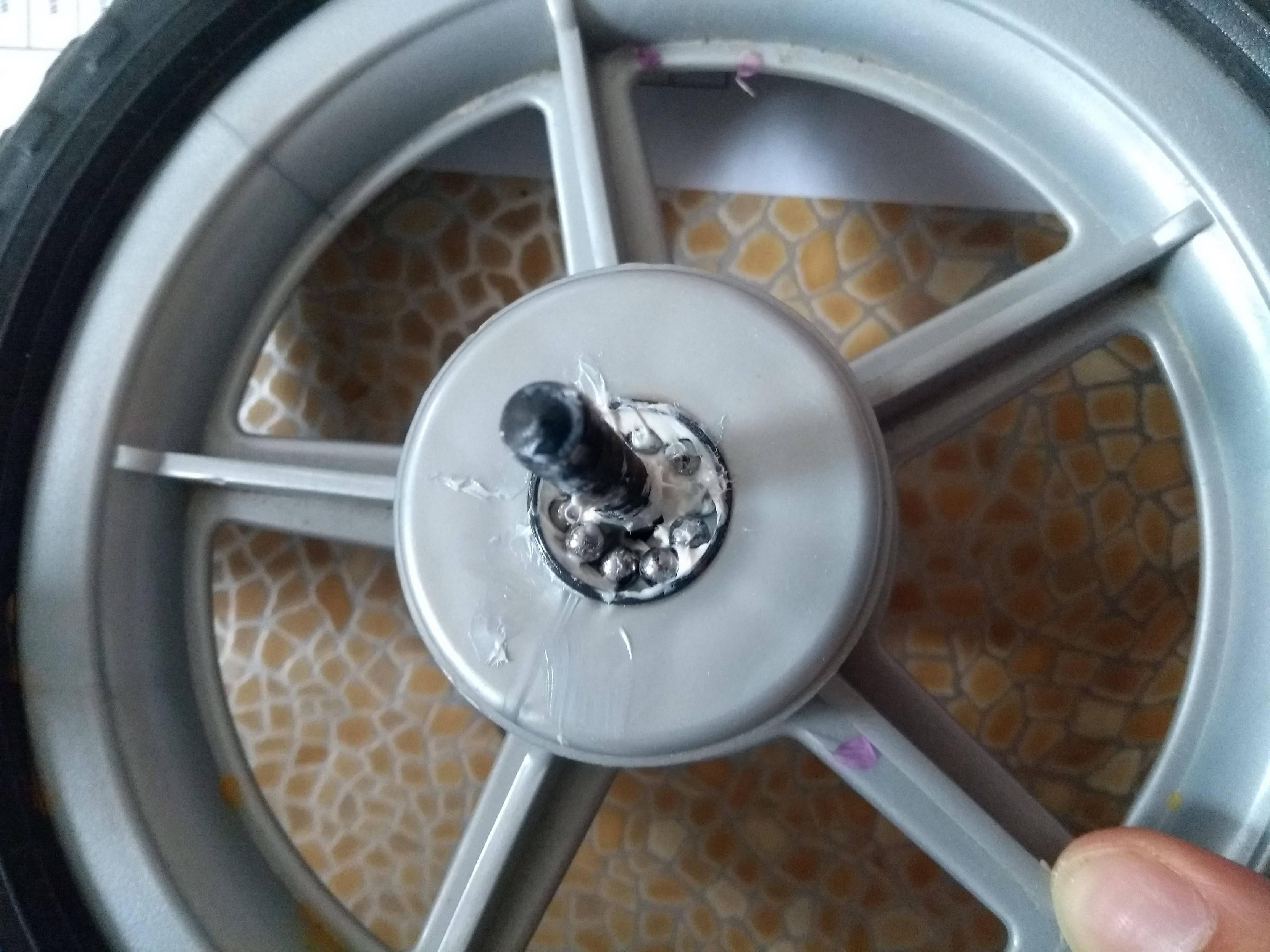Ok, answers are not exactly flooding in, but I can see why my OP might not be the most interesting. However, I will record briefly what I've done in case anyone does face this situation in the future.
Research: I researched the subject of bearing replacements a bit. I failed to find a proper single thorough article dealing with all the considerations, but I got the impression caged bearings must be avoided, so I went for replacing with a loose ball bearing.
Buying: I measured the balls with a caliper gauge and confirmed they were 5 mm. I bought 20 on eBay for £2, and a 20g tube of lithium grease for another £2. I'd love to support an LBS but every penny counts at the moment and I don't even have time to go into one.
Work: I built a loose ball bearing, the process was very much like in the many YouTube videos. I used the surviving caged bearing first, and reassembled the wheel so that the axle stopped the balls falling in. The process was messy: the plastic plate disc doesn't have a trough-shaped race to hold the balls, so they bundled together around the axle instead of forming a circle around the perimeter of the recess. It didn't help I was distracted with my 2 and 4 yo helpers. For example, I did a dry assembly before using any grease to see how many balls I need. I failed to write the number down. With grease, I found the number that seemed right would not allow the cone to go all the way in , so I had to take one ball out, and the remaining gap seemed big. But everything seemed to fit together well, there is no play and the wheel seems to spin ok. I really don't know how tight the cones are supposed to be, I would say they are just a touch more than "finger tight" as I was conscious about snapping the main plastic disc, but it all seems to work, and I have been checking regularly since. Finally, I also greased the other wheel.
Conclusions for the two questions in my OP
I wish I had ignored the superiority of loose ball bearings and gone for a caged bearing. Everything would have been quicker and the size I needed was available on eBay as a pair with a 5 g tub of lithium grease for £2, and it would probably have been fine for a balance bike. I wish I had kept track of which plate and cone went with the surviving caged bearing. And although it was reasonably clear which way the caged bearing needs to face, I did find it reassuring that the other wheel had it facing the way I expected: .
The space between the screws and the frame in my OP was because the nut had worked itself loose, there are no visible parts of the axle after I put it all back together.



